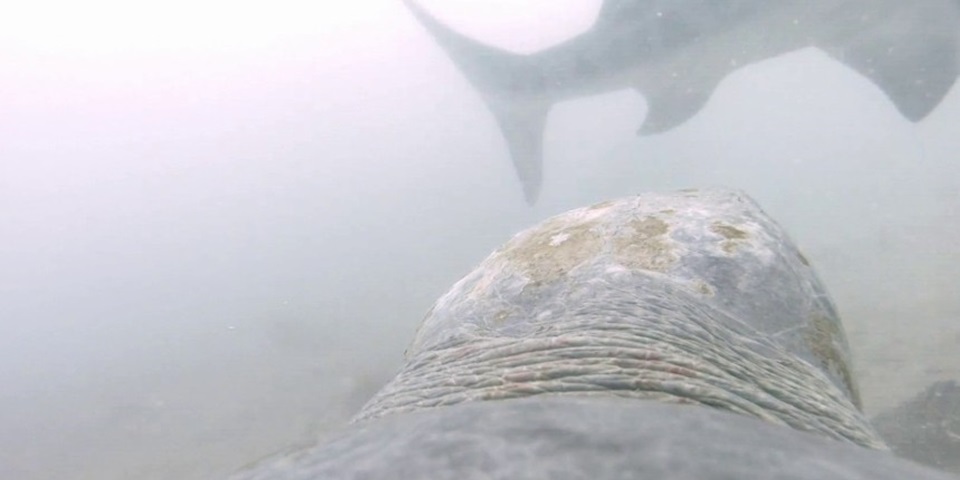News
Flatback turtle fights back to shark attack

Researchers from the Harry Butler Institute and Western Australia’s Department of Biodiversity, Conservation & Attractions have captured world-first video footage of a shark attacking a sea turtle from the turtle’s perspective.
A sea turtle’s shell is an iconic trait, protecting these ocean wanderers from becoming the next meal of a hungry shark. As such, they are often perceived as placid creatures that hide behind their protective “shield” at the first sign of danger.New research from the Harry Butler Institute in collaboration the Western Australia Department of Biodiversity, Conservation & Attractions challenges this view after capturing first-time footage of a flatback sea turtle aggressively fending off a tiger shark attack.
The entire interaction was captured using novel ‘smart tags’ akin to wearing an action camera coupled with a Fitbit, which were attached to the sea turtle.
PhD Candidate at the Harry Butler Institute, Jenna Hounslow said it is not surprising that a tiger shark would attempt to kill and eat a sea turtle, considering they are one of the main prey items of tiger sharks
“What amazed me was to see the turtle aggressively defending itself by attempting to bite the attacking shark,” Ms Hounslow said.
The project studies turtle foraging behavior in Roebuck Bay in Western Australia, in the hope of revealing the poorly understood lives of flatback turtles on their feeding grounds.
Ms Hounslow said the findings from the video encourage the use of contemporary technology to observe sea animals more closely in future research projects.
Aggression and fighting behaviour may have been previously overlooked as anti-predator behaviour in sea turtles because documenting an animal’s point of view for extended periods underwater has only recently become possible.”Dr Sabrina Fossette from WA DBCA added that many aspects of the lifecycle of flatback turtles are still relatively unknown to science.
“This new technology offers us unparalleled insight into what these turtles do when they are at sea away from their nesting beaches, which represents the largest portion, yet most poorly understood, aspect of their lives.”
Ms Hounslow added unlike land tortoises, sea turtles cannot fully withdraw into their shell.
“We suspect the aggressive behaviour is simply a means to reduce the chances of being eaten when the shell does not offer full protection. On this occasion, the turtle was able to escape the shark unscathed.”
Background
- The paper is titled ‘Animal-borne video from a sea turtle reveals novel anti-predator behaviours’ published in Ecology. DOI: 10.1002/ECY.3251
- This research is part of the North West Shelf Flatback Turtle Conservation Program, a ground-breaking research project at the recently identified flatback foraging ground.
- The project in Yawuru Nagulagun Roebuck Bay Marine Park is run by the DBCA as part of the Yawuru Nagulagun joint management program and also in collaboration with the Yawuru PBC. It would not have been possible without the contribution of traditional ecological knowledge from traditional owners and the Yawuru Country Managers involvement.
Read the full paper published online in Ecology.